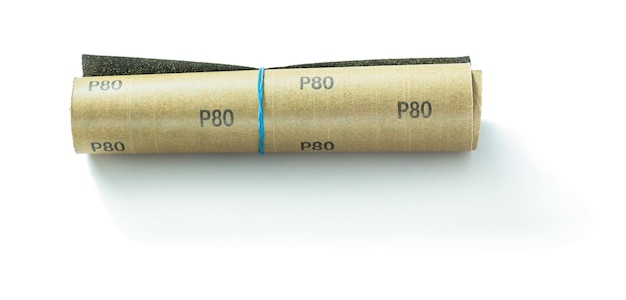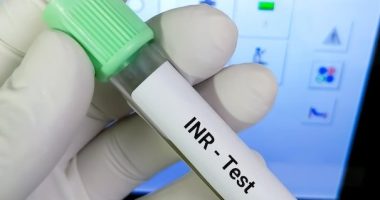In a groundbreaking study published recently, researchers have shed new light on the complex warfare tactics employed by bacteria in their struggle for dominance. The research, led by Simon B. Otto and colleagues, focuses on the intricate role played by pili—the hair-like structures on the surface of bacteria—in the competitive interactions mediated by the Type VI secretion system (T6SS). This system, which is likened to a molecular spear, allows bacteria such as Vibrio cholerae to inject harmful proteins into neighboring cells, thereby eliminating competitors.
Previous investigations have highlighted the T6SS’s pivotal role in bacterial competition and community dynamics, particularly its ability to discern kin from non-kin. However, less understood has been the influence of cellular appendages like type IV pili (T4Ps) on these interactions. Otto and his team delve into this aspect by examining how T4Ps facilitate or hinder the T6SS in targeting and killing non-kin cells under different environmental conditions.
Their findings reveal that the presence and diversity of T4Ps significantly affect the outcomes of T6SS-mediated encounters, enhancing the ability of V. cholerae to selectively attack and kill competing bacteria in fluid environments. Through the development of a sophisticated, physics-based computational model, the study not only elucidates the mechanisms of autoaggregation influenced by pili but also emphasizes the critical role of pilus diversity in the protection of kin groups. This study unveils important nuances in bacterial behavior and offers insights that could potentially inform the development of novel antimicrobial strategies.
The background of this critical study stretches back to the increasing recognition of bacterial communities’ complexity and the intense competition these microorganisms face in their natural environments. The dynamics of these microbial ecosystems are not merely about survival but also about dominance and control over resources, which necessitates intricate combat mechanisms among bacteria.
Historically, the Type VI secretion system (T6SS) has been a focal point of research due to its role as a decisive factor in these bacterial battlegrounds. Identified as a contact-dependent killing tool, the T6SS functions like a molecular syringe, shooting toxic proteins into adjacent cells. This capability makes it a critical determinant of bacterial virulence and a key player in inter-bacterial interactions. Initially, research into T6SS was primarily concerned with its structural and functional aspects; however, subtler roles, particularly how it discerns between kin and non-kin cells, have become of significant interest.
Such discernment between kin and non-kin is crucial as it determines the selectivity of attacks, essential for the survival and growth of bacterial colonies. This ability to discriminate also underpins the formation of complex social behaviors within bacterial communities. Studies have shown that bacteria can use the T6SS to support their kin by clearing competing strains from the environment, thus securing resources and space for the clone’s growth.
The role of appendages like the type IV pili (T4Ps) has come into sharper focus only in more recent studies. T4Ps are filamentous polymers protruding from the bacterial surface, known primarily for their role in surface attachment and motility. Emerging research, including the study by Simon B. Otto and his colleagues, has started to unravel the additional roles that these structures play in mediating the effectiveness of the T6SS. Unlike the T6SS, the mechanical and functional roles of T4Ps in the context of bacterial aggression and defense were not as extensively understood.
The impetus for examining the interaction between T4Ps and the T6SS springs from the need to better understand the layers of complexity in bacterial competitive strategies. Recognizing how certain structures facilitate or hinder offensive systems like the T6SS under different environmental conditions can provide deeper insights into bacterial evolution and adaptive strategies. This knowledge is particularly urgent given the rise of antibiotic resistance, as understanding these systems could lead to novel approaches in developing antimicrobial therapies that exploit the natural vulnerabilities of pathogenic bacteria.
Consequently, Otto’s study delves into this lesser-charted territory, exploring how variations in pili influence T6SS-mediated encounters, ultimately affecting the microbial community’s structure and dynamics. Their findings not only enhance our understanding of microbial social interactions in fluid environments but also set the stage for future research aimed at manipulating bacterial communities to human advantage, particularly in medical and industrial settings. This intersection of microbiology, physics, and computational modeling is thus pivotal in decoding the sophisticated ways bacteria interact and compete, laying foundational knowledge that could reshape our approach to addressing bacterial infections.
To explore the complex interaction between Type IV pili (T4Ps) and the Type VI secretion system (T6SS) in bacterial warfare, Simon B. Otto and his research team employed an integrated methodology combining experimental microbiology, advanced imaging techniques, and computational modeling. This multidisciplinary approach allowed them to dissect the nuanced dynamics between these structures under various environmental conditions and assess their impact on competitive outcomes among bacterial populations.
### Experimental Setup
The experimental portion of the research primarily involved genetically engineered strains of *Vibrio cholerae*. These strains were modified to either express or lack T4Ps under controlled laboratory conditions. The team introduced mutations in specific genes known to govern T4P assembly and function. By comparing wild-type strains (with fully functional T4Ps) against these mutants, researchers could observe how the presence or absence of T4Ps influenced T6SS-mediated interactions.
To quantitatively measure the impact of T4Ps on T6SS function, the team utilized a fluorescence-based killing assay. In this assay, target bacterial cells, labeled with a fluorescent marker, were co-cultured with effector cells (cells that actively use T6SS). The decrease in fluorescence over time provided a direct measure of T6SS-mediated killing, as successful attacks by the T6SS led to the death of target cells, thereby reducing their fluorescence.
### Advanced Imaging Techniques
High-resolution imaging techniques were pivotal in visualizing the physical interactions between bacteria during these encounters. The team employed time-lapse fluorescence microscopy to watch the real-time dynamics of bacterial interactions. This allowed them to observe how T4Ps and T6SS directly interact and align during contact between cells. Specifically, they could visualize the assembly of T6SS apparatuses and the deployment of these structures towards target cells depending on the presence of T4Ps.
### Computational Modeling
To complement the experimental data and understand the underlying physics of these interactions, the research team developed a sophisticated computational model. This model simulated the mechanical forces exerted by T4Ps and their influence on the alignment and function of T6SS. The simulations considered various physical properties such as the stiffness of pili, the frequency of pilus retraction, and the spatial dynamics between bacterial cells in a fluid environment.
The computational model used differential equations to represent the forces and movements involved, integrating empirical data from the experimental studies to refine its accuracy. By adjusting parameters within the model, the team could predict how changes in T4P characteristics would affect the outcome of T6SS-mediated attacks under different environmental conditions.
### Integrative Analysis
By integrating the experimental findings with the computational model, the study not only validated the physical model but also provided deeper insights into the mechanistic roles that T4Ps play in facilitating T6SS attacks. This cohesive approach offered a comprehensive view of how mechanical and biological factors intertwine to dictate the competitive strategies of bacteria, revealing complex behaviors that would not be apparent from isolated experiments alone.
The methodology employed in this study exemplifies the power of combining bench science with computational tools to dissect biological complexity, illustrating a pathway forward for similar microbial and ecological studies.
### Key Findings and Results
The study spearheaded by Simon B. Otto uncovered several critical insights into the synergistic interaction between Type IV pili (T4Ps) and the Type VI secretion system (T6SS) in *Vibrio cholerae*. One of the primary findings was that T4Ps significantly enhance the precision and efficiency of T6SS attacks in fluid environments, which are typical of the natural habitats wherein these bacteria thrive. This enhancement appears to be mediated by the mechanical forces exerted by T4Ps, which facilitate better alignment and proximity between the attacking and target bacteria, thus optimizing the delivery of toxic proteins.
### Enhanced Targeting and Efficiency
Experimental results demonstrated that *V. cholerae* strains with functional T4Ps were significantly more effective in eliminating competitor bacteria as compared to the T4P-deficient mutants. The fluorescence-based killing assays showed a marked decrease in the survival of target cells when exposed to strains with intact pili. This direct correlation underscores the role of T4Ps in increasing the lethality of T6SS-mediated interactions.
### Mechanistic Insights from Imaging
High-resolution imaging provided a dynamic view of these interactions. It was observed that T4Ps frequently made contact with target cells before the deployment of T6SS, suggesting a scouting or targeting role of these appendages. Furthermore, time-lapse microscopy revealed that T4Ps seemed to stabilize contacts with target cells, providing a necessary anchor for the efficient operation of the T6SS spear. This stabilization likely reduces the energy and time required for successful T6SS deployment.
### Computational Model Validation
The computational models developed as part of the study offered a broader understanding of the forces at play during these microscopic battles. The simulations aligned well with experimental observations, highlighting how variations in pilus stiffness and retraction dynamics could influence the success rate of T6SS attacks. Through this model, the research team demonstrated that even subtle changes in the mechanical properties of T4Ps could lead to significant differences in competitive outcomes, emphasizing the adaptive potential of these structures.
### Environmental Context and Behavioral Flexibility
Delving deeper, the study also explored how environmental factors such as fluidity influence T4P and T6SS interactions. In more static environments, the benefits provided by T4Ps seemed to diminish, suggesting that their advantage is context-dependent, optimized for environments where *Vibrio cholerae* commonly encounters fluid dynamics. This finding indicates a sophisticated level of environmental adaptation and specialization among bacterial competitive mechanisms.
### Broader Implications
Overall, the study not only maps out the mechanical and biological synergies between T4Ps and T6SS but also broadens our understanding of microbial behavior in natural and clinical settings. By revealing how specific bacterial structures contribute to survival and dominance, these findings can influence future approaches to managing bacterial infections, especially in designing strategies that disrupt these interactions. Moreover, understanding these mechanisms opens up potential avenues for biotechnological applications where bacterial systems are engineered for beneficial outcomes, such as in waste degradation or biofilm management.
By integrating multidisciplinary methodologies, this study sets a precedent for future research in microbial ecology and evolutionary biology, providing a framework for exploring the complex interactions that define microbial communities.
### Future Directions and Final Thoughts
The groundbreaking work by Simon B. Otto and his team illuminates the intricate dance between Type IV pili (T4Ps) and the Type VI secretion system (T6SS) in *Vibrio cholerae*, offering a showcase of how microbial competitions are finely tuned by evolutionary pressures. The study’s revelations open new avenues in microbiological research, where the main focus could shift towards the specific characteristics that render bacterial interactions either competitive or cooperative depending on environmental contexts.
#### Investigating Other Bacterial Species and Environments
Future research should look to exploring the role of similar systems in other bacterial species. Each species might have evolved unique adaptations or variations of T4Ps and T6SS, responding differently to environmental stimuli. Understanding these variations could lend insight into the broader ecological and evolutionary roles of these structures. Moreover, extending these studies to more complex, real-world environments such as soil communities or the human gut microbiome could provide a realistic perspective on how these mechanisms operate outside controlled laboratory settings.
#### Developing Anti-Virulence Therapies
One of the most promising applications of this research lies in the development of anti-virulence strategies. By targeting the interaction between T4Ps and T6SS, new therapeutic approaches could be designed to disarm pathogenic bacteria without necessarily killing them, potentially reducing the pressure for resistance development. Anti-virulence therapies might involve small molecule inhibitors that disrupt pilus assembly or function, sparing the natural microbiota and only attenuating virulent pathogens.
#### Biotechnological and Industrial Applications
The mechanics of T4Ps and T6SS could also be harnessed for biotechnological applications. Engineered bacteria that utilize a modified version of these systems could be developed for targeted delivery of substances in environmental or industrial processes, such as bio-remediation or in the synthesis of complex compounds.
#### Tools for Studying Microbial Ecology
Additionally, the advanced imaging and computational techniques developed for this study enrich the toolkit available to microbiologists, offering new ways to visualize and model bacterial behavior. These tools could be pivotal in further studies on microscale interactions, improving our understanding of microbial ecology and evolution.
#### Ethical and Ecological Considerations
As research progresses, it will also be crucial to consider the ethical and ecological implications of manipulating bacterial systems, especially when considering applications in open environments. Regulatory frameworks will need to evolve in tandem with the scientific advancements to ensure safe and responsible application of these technologies.
### Concluding Reflections
The dance of dominance among bacteria, as mediated by structures like T4Ps and T6SS, is a vivid reminder of the complexity and sophistication of microbial life. This study not only advances our understanding of bacterial interactions but also serves as a paradigm of how multidisciplinary approaches can unravel the subtleties of life’s mechanisms. As we forge ahead, the insights gained here could reshape our approach to fighting bacterial infections, managing bacterial populations in industrial applications, and understanding the fundamental rules that govern microbial communities. The path forward is ripe with potential, guided by the intricate interplay of competition and cooperation that defines life at the microscopic scale.









